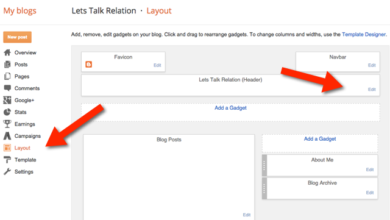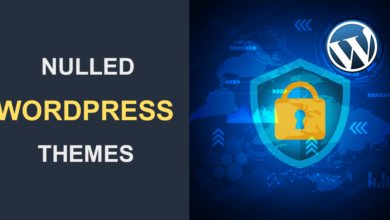This is a descriptive guide on 13 free things you can do to rank your blog posts on Google in 2023.
What every blogger or website owners long for is to make sure their blog posts or websites are found on Google’s first page. I will be showing you exactly how you can do that.
When I started, I had no idea what SEO meant. All I did was write and write. But, as time went by and as I moved deeper into blogging, I got to know more about SEO.
If you are thinking of starting your blog or website soon, you will find these SEO guides indispensable.
What Is SEO All About?
SEO is the abbreviation for
Search Engine Optimization. According to
Yoast, Search Engine Optimization (SEO) is the process that attempts to optimize sites to make them appear in a high position in the organic search results.
According to
Moz,
Search Engine Optimization (SEO) is the practice of increasing the quantity and quality of traffic to your website through organic search engine results.
“As much as you invest in your writing skill, do so or more on your SEO skills. It is calamitous to have good content without a trace of SEO guidelines.”
Plugins To Use For SEO On Your Blog or WordPress
If you are new to WordPress, you may not know that there are some SEO plugins you can install. Three of the popular SEO plugins are the
Yoast SEO plugin, Rank Math, and
All-In-One SEO.
Some of the factors that also rank you well on the Google search engine are; Your domain authority (the higher the better), Backlinks to your blog (how often people link back to your post), Quality content (Google knows duplicated contents), and how people interact with your blog on Google search engine (if people go back to google search result page immediately they click on your blog, what it means to Google is that your content is not good enough).
13 Free Things You Can Do To Rank Your Blog Posts On Google
To make your posts rank well on the Google search engine, there are some guidelines you should follow for as long as you write a new blog post.
The SEO guides are as follows;
1). Create Mobile-Friendly Blog/Website
If your website or blog is not mobile-friendly, mobile users won’t be happy to check back on it. Make use of responsive designs, themes or templates, or
AMP. Also, after creating a mobile-friendly blog, check how your blog looks on browsers such as
Chrome, UC Web, Opera, and Mozilla Firefox with your mobile phone.
If your blog is part of your personal or business website, give more attention to it and give it the best design.
Here at Alpha Web Agency, we will design you a website or blog that will bring the right audiences to you. Check out our web design service here.
2). SEO-friendly post URL (permalink)
According to Google, the first 3-5 worlds in URL are given more weight. It is wise to make your post URL as short as possible. While doing that, make sure your keyword appears in your URL. For example, https://www.alphawebagency.com.ng/who-is-dapo-obembe/.
If you are on Blogspot, make sure you manually set up your permalink instead of using the automatically generated link which is not always friendly.
3). Make Sure Your Focus Keyword Appear In First Paragraph
Don’t use your keyword only in the middle of the post, drop it in the first 100-150 words. This helps Google understand what your page is about. If you are using the Yoast SEO plugin, it will let you know when the focus keyword is missing from your first paragraph and even from your search description.
4). Start Your Post Title With Keyword
When writing your post, start your post title with the keyword you want to rank high for. If it is not at the beginning, make sure it is closer to the beginning of your title.
5). Add Modifiers To Your Title
Modifiers are review, 2022, list, the best, FREE, and they can help rank high for long-tail keywords and even increase your Click Through Rate. People are likely to click on “How to start a blog in 2023 For FREE” compared to “How to start a blog.”
6). Include Multimedia In Your Post
Having multimedia in your blog post such as images, videos, GIFs will reduce bounce rate and increase the time visitors spend on your blog.
This may not be all the time but when necessary, do it. Videos and images catch our attention and you should leverage that.
7). Make Your Subheadings In H2 Tag
If you are familiar with the Yoast SEO plugin, you would have seen that the plugin encourages using your keyword in at least one of the subheadings in the h2 tag.
WARNING: Do not use an H1 tag in your post body. Your post title is already in H1, there is no need for it in the body. You only need H1 if you are building a custom page or post.
8). Link To External Sites
Some people referred to this
outbound linking. In your post, try as much as possible to link to related posts on the web. While researching your topic, you must have seen them.
Brian Dean said,
“Not linking out might be the number one on-page-SEO mistake most people make. Try to use 2-4x outbound links per 1000 words. He called it a good rule of thumb.”Don’t be a stingy blog owner or blog writer. Always link out to reasonable websites. See a detailed guide on how to build backlinks here.
9). Inbound Linking
You will RARELY have a word in a post you have not written something about. Another rule of thumb is to link internally to posts that are related to the current post you are writing. This helps with your website’s Page Authority.
Apart from the fact that Google loves it, it can retain your readers and it will make crawling your site easier for web crawlers.
10). Take Care Of Your Site’s Speed
Loading speed is an SEO ranking signal. If you are on WordPress, there are some cache plugins you can use. Also, you can use CDN and also image compressors like Smush It.
Apart from using plugins, get rid of widgets that are useless on your sidebars or footer bars. Also, try to use YouTube videos instead of directly uploading the video on your blog.
As a WordPress user, stop the habit of installing and activating plugins you do not need. In other words, use a few plugins.
11). Use Your Keyword As Alt Text In Your Inline Images
Whenever you use an image inside your post, at least one of the images you use must have your keyword as the alt text. Alt(alternative text or attribute) is used in case the image does not load in the browser. It also helps Google in ranking you for that particular blog post.
12). Write Long Content
Longer content tends to rank higher on Google’s first page. There is some confusion about this. Some
SEO experts said you should have about 1800 words, some higher, some less. Aim for at least 500+ words for every piece of article you write. This will boost dwell time as it increases visitors’ time on your blog.
Also, if your visitors are accustomed to 350+ words, go ahead because longer post contents may scare them off.
Whatever you do, make sure your content solves visitors’ problems.
13). Put Your Audience In Mind
While creating your content, put yourself in the shoes of your readers or anyone searching for the topic on Google and answers the questions below;
- What do you want the post to do for them?
- How will you feel after reading it if you were the one searching?
- Will they have to check another blog for the same topic?
In doing this, think through the topic, the title, and the contents before dishing it out.
Concluding 13 Free Things You Can Do To Rank Your Blog Posts On Google
SEO is not a one-time thing. It is something you will continually do as long as you are into blogging. It is the surest way of getting organic traffic and by far better than PPC(Pay Per Click) adverts. No one is an island of knowledge, attend seminars, online courses/tutorials, mingle with experts and make sure you learn from them. I hope these tips on how to rank your blog posts on Google help you.
Which of these guidelines have you been following? Feel free to share with me and let your friend know about it.
Before you go, kindly share this article so other people can know about it.




